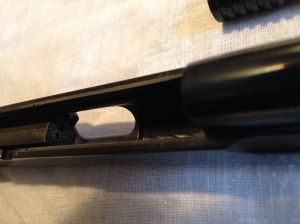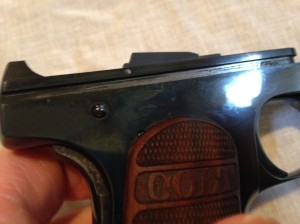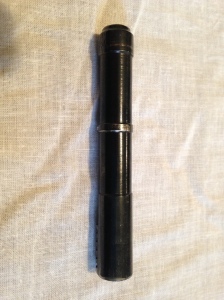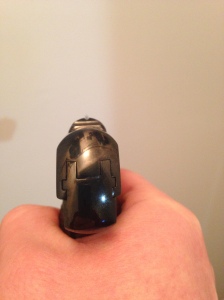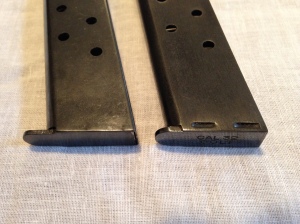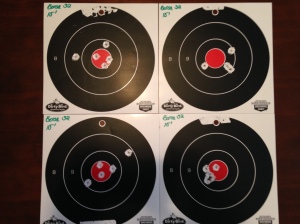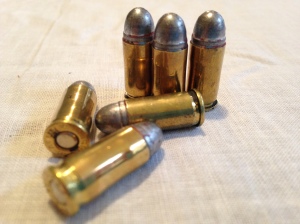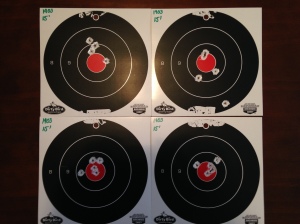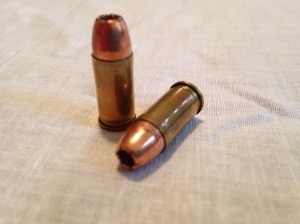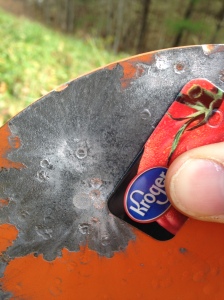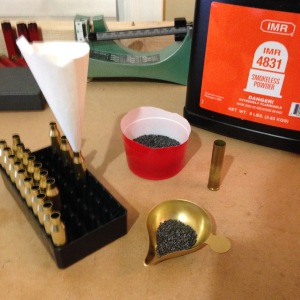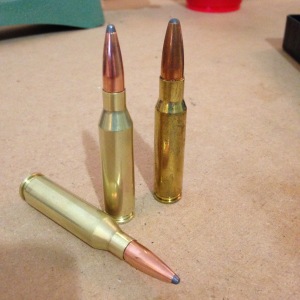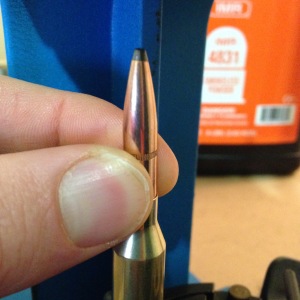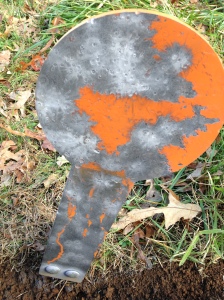There’s nothing like shiny blued steel and walnut grips to make happy the hand of a pistol shooter. But waxing poetic about metal finish and fine grained wood will not begin to give you an appreciation for this gun. The Colt 1903 defines fit in my mind. This is a pistol not designed to par with a .45 or even a revolver firing a stout defensive load. Over half a million 1903s were made before production ceased towards the middle of the 20th century so it reasons to believe most will exhibit a little bit of play. And this is where a refinish job will tell you another story.
I’ve put a couple hundred rounds through this gun since the refinish job. Mostly handloads with a few factory rounds thrown in here and there. Notice the wear marks on the slide, the inset of the frame where the rails ride, the barrel hood. This pistol is tight. It feels tight. It racks tight. It wears tight. I present to you the marks of accuracy potential.
But what about practical shooting accuracy? Bring out the magnifying glass cause you’re going to need one if you want to shoot the Colt with any sort of precision. This gun will hammer nails if you line up the sights… a big if considering their size. I must admit the shiny blue finish did nothing to enhance the contrast between the now blurry front sight and hair thin notch in the rear. The contrast is so miniscule I was unable to take a picture that really demonstrated the sight picture. If I was going to carry this pistol as a primary piece I would send it to Novak Sights. But as one wishing to keep a semblance of nostalgia I will make do.
Another thing you will notice from the pictures are the magazines. If you go out and buy a 1903 you will quickly learn a factory magazine will run in the neighborhood of $80+. I scored three no name after market mags from Numrich to the tune of $38 each. I had to gently file the top of the feed lips to ensure proper seating but after working the slide a few times with the magazines in place they presented no problems. Aftermarket mags like mine differ from the original by sporting a longer base plate. They also lack the two indentations at the bottom of the magazine on each side. Even though a factory mag will usually be finished in a two-tone with bare steel on top, Colt refinished mine in solid matte. An additional difference would be the lack of the “CAL 32 COLT” on the bottom of the base plate for the aftermarket mag. As for difference in function – none.
In an effort to compare the Colt to a modern predecessor I brought along a Bersa Thunder 32. The Bersa features all the modern steels and decent sights of a modern gun and it is the closest thing to the Colt I could find.
It also gave me the option of firing in single action and the Colt fires no other way. Since 32ACP is scarce in my locale I loaded up some handloads and headed to the range. The load consisted of mixed headstamped brass, CCI #500 primers, 2.2 gr. W231, topped off by a Rimrock 78 gr. (.313) LRN. First up was the Bersa. Firing in single action mode only, I was able to punch four respectable groups of five rounds each into the bullseye at 15’.
Next up was the Colt. The tiny sights were difficult to pick up but the trigger more than made up for the shortcoming. A little bit tighter, but not a significant edge.
So which one wins? I think it’s a toss up. On one side you have the Bersa with decent three dot sights shooting respectable groups. Then you have the Colt with horrible sights doing ever so slightly tighter groups. Because of the sights I had to spend twice as much time lining up sight picture on the Colt so maybe that is not a fair representation. Then again, if proper presentation is practiced the Colt will allow the shooter to machine gun rounds with combat accuracy. It will also feed rounds the Bersa chokes on. Though I didn’t shoot any at this last range session, 60 gr. Speer Gold Dot handloads run through the Colt like full metal jacket loads.
The Bersa, with its blowback design, requires ample reward energy to cycle the slide. The Colt will gobble up light loads and spit out the cases with ease. Whereas the Bersa adheres to matte finish and polymer grips, the Colt pairs with jeans and a t-shirt or a tuxedo.
All joking aside, this is a nice gun from a period when even firearms designated as backups or concealable were given the same attention to fit and finish as the larger guns. Seeing may be believing but shooting is experiencing. And you are missing out on great one by not experiencing the Colt 1903.

